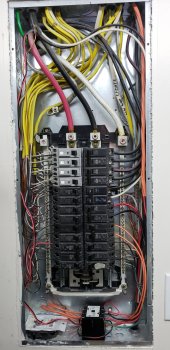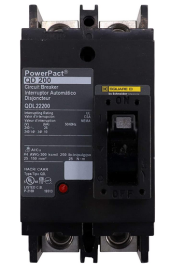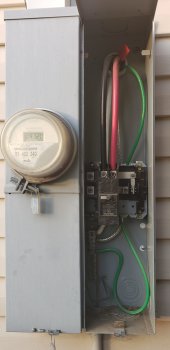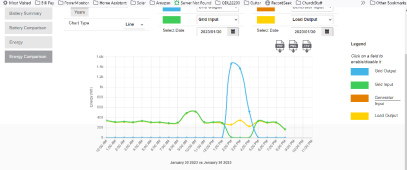Allgood-Energy
Prepare Yee Prepare Yee for End of Days
- Joined
- Sep 24, 2020
- Messages
- 48
I have recently had problems keeping my system grid-tied; because my main breaker keeps tripping.
I started this thread because others asked me to start it.
I have a 200 Amp Meter and Mains. The meter base has a divided base with the meter on the left and a 200 Amp breaker on the right. Picture shown. The incoming power goes from the 200 amp main to the knife disconnect on the right and back to the panel where the CB is and into the main's panel inside the house; the picture is also shown.
When I get a sunny day my production goes to 6 + KW and the loads I have are fairly small, less than 2Kw.
This is when the 200 amp main trips. The line-up of breakers between the inverter and the 200 amp main; is the 60 amp in the mini PDP, and the 60 amp in the main, which is considered the back feed breaker. I have never tripped either of these lower amperage breakers while back-feeding the grid. This is troubling, I have talked with some solar installers in the area and they say they have seen this particular breaker fail in this same way on their installations. The panel is a GE meter socket load center TSL420FCU and uses a plug-in main 200 amp breaker TQDL21200. This breaker is no longer manufactured by GE or anyone else. You can get used ones on the internet for about $2000. OHHH not me. I guess when ABB bought GE a few years ago they stopped making this junk. I guess rightly so.
So I have decided to replace the breaker, by opening the meter main and wiring the meter directly to the input side of the knife switch and adding a different manufacturer's breaker at the bottom of the knife switch enclosure. The knife switch was added to the incoming power chain when Rocky Mountain power required me to add it for the addition of this solar installation. This was not cheap this 200 Amp mains knife switch was over $600. But at least I now have a place to put the new breaker. So if the $600 wasn't enough to add insult to injury I now have to buy a new $500 breaker. Now I am wondering if this is all related to the spiking of power seen by some others using the XW-pro inverter build 49 firmware????
I started this thread because others asked me to start it.
I have a 200 Amp Meter and Mains. The meter base has a divided base with the meter on the left and a 200 Amp breaker on the right. Picture shown. The incoming power goes from the 200 amp main to the knife disconnect on the right and back to the panel where the CB is and into the main's panel inside the house; the picture is also shown.
When I get a sunny day my production goes to 6 + KW and the loads I have are fairly small, less than 2Kw.
This is when the 200 amp main trips. The line-up of breakers between the inverter and the 200 amp main; is the 60 amp in the mini PDP, and the 60 amp in the main, which is considered the back feed breaker. I have never tripped either of these lower amperage breakers while back-feeding the grid. This is troubling, I have talked with some solar installers in the area and they say they have seen this particular breaker fail in this same way on their installations. The panel is a GE meter socket load center TSL420FCU and uses a plug-in main 200 amp breaker TQDL21200. This breaker is no longer manufactured by GE or anyone else. You can get used ones on the internet for about $2000. OHHH not me. I guess when ABB bought GE a few years ago they stopped making this junk. I guess rightly so.
So I have decided to replace the breaker, by opening the meter main and wiring the meter directly to the input side of the knife switch and adding a different manufacturer's breaker at the bottom of the knife switch enclosure. The knife switch was added to the incoming power chain when Rocky Mountain power required me to add it for the addition of this solar installation. This was not cheap this 200 Amp mains knife switch was over $600. But at least I now have a place to put the new breaker. So if the $600 wasn't enough to add insult to injury I now have to buy a new $500 breaker. Now I am wondering if this is all related to the spiking of power seen by some others using the XW-pro inverter build 49 firmware????







